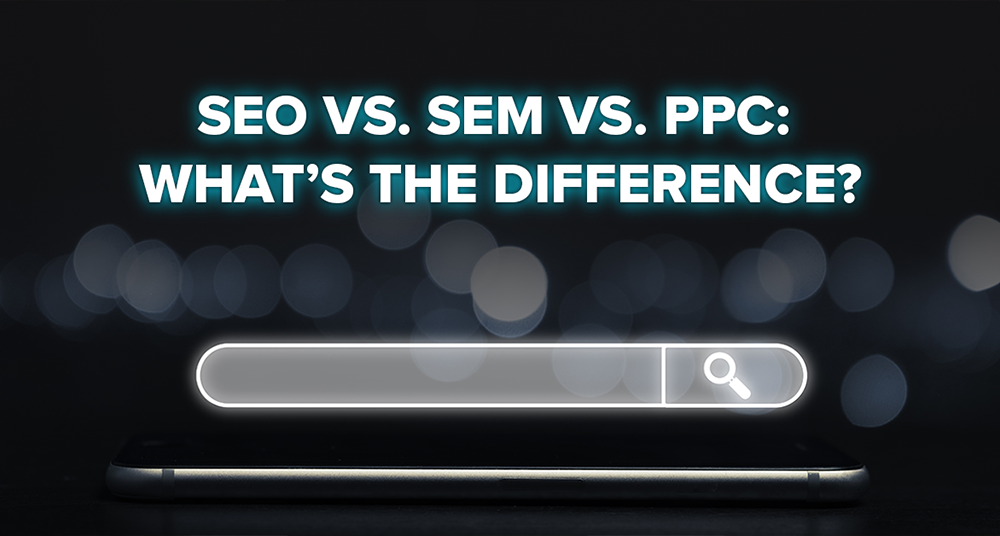Have you ever seen an appealing picture of a pizza while scrolling through your social media feeds and thought: oh, how I wish this delicious treat materialized in front of me so I can immediately have a bite into it?
Well, of course! It’s pizza!
Now, let’s explore this phenomenon but with you in the role of the observer. Your friend is looking at the same picture, and you notice their facial expression is somehow changing from happy to curious, and their gaze is fixated on their phone screen.
A closer look at their eyes and you see their pupils dilated in order to absorb more information about that precious, but sadly, digital representation of deliciousness. Well, what you just did is an assessment of their behavior when exposed to a particular stimulus.
In essence, this rudimentary evaluation is a strategy that the marketing sectors in companies combine with certain tools so that they can calculate how their product would be accepted by their target audience.
This assessment is more commonly known as neuromarketing.
Of course, this example only scratches the surface in providing the right answer to the question: What is neuromarketing? Therefore, let’s start with defining the term.
What is Neuromarketing? A Simple Definition
Neuromarketing is applying neuroscience and cognitive science in the segment of marketing.
This science is observing the brain as its primary subject and aims to measure the psychological and neural signals that travel as impulses.

This way marketers can obtain an overall insight into the customer’s motives, preferences, and (ultimately) decisions.
The process continues as the collected information is used for coming up with creative advertisement ideas that will bait the consumer into showing interest in the marketers’ products.
Based on the results of these evaluations marketing experts can also benefit in the product development, create the pricing segment, and boost some additional marketing areas.
Yes. We know. It sounds a bit concerning. But relax, this strategy is always performed with consent from the particular subjects. It’s not like the Big Tech forcefully executes these practices on random people they encounter along the way. But this is not the topic of this analysis.
The Concept Behind Neuromarketing
Now that we have answered (more or less) the question: “What is neuromarketing?”, it’s time to dive a bit deeper below the surface area and explore the depths of this concept.
In essence, neuromarketing is a slightly new method of work that benefits from exploring how the human brain works. Traditional marketing approaches that metered the behavior of the customers mainly used surveys and polls that focused on a group of people and used evaluations based on their responses about a certain product.
However, with this method experts always came to a slight discrepancy between the results of the surveys and actual behavior that was observed while the subjects purchased an item.
This only proved that process of buying is not that simple and that despite the explicit emotions observed in these surveys, there were other emotions that also have a large influence on the final decision of the buyer.
These emotions are called implicit or unconscious emotions.
In fact, these implicit emotions are the main research field of neuromarketing.

So, researchers use some non-invasive techniques that cover EEG (electroencephalography), MEG (magnetoencephalography), as well as fMRI, electrodermal response measures, and eye-tracking to better understand the client’s behaviors. We will talk about this shortly.
All of these techniques can tell market researchers how consumers really feel underneath their conscious set of actions. The information is then analyzed so that it unveils if any of the products presented before the consumers has sparked a set of positive emotions in the brain.
Therefore, neuromarketing is used as a source for studying patterns in the behavior of the consumers, that is associated with the advertisements and the decision-making process.
The Tools of Neuromarketing
All of the tools that we have mentioned before such as EEG, MEG, fMRI, and others can show the metrics about the vital functions and reflexes of one human being. In terms of marketing, these metrics can tell a lot about the reactions, impressions (positive or negative) that are experienced by people subjected to these methods.
The brain activity and the impulses are particularly measured with the help of EEG and fMRI which can present real-time metrics about what is going on inside the head of a potential consumer once they are exposed to certain stimuli.
Nowadays, the most used methods for measuring brain impulses are fMRI and EEG. The neural activity is important for marketers to better understand the desires and needs of their consumers and predict their moves along their buyer’s journey.
The fMRI is a method where the subject is lying down in a machine that is taking a constant measurement of a person’s changes in the blood flow across the brain with the help of very strong magnetic fields.
The EEG is a method that takes metrics from the person’s head by using sensors. They can measure activity over a fraction of a second. However, what is bad at, is showing the exact place where the brain activity is occurring.

On the other hand, fMRI can make readings from deep inside the brain’s activity, but it lacks the precision of the EEG.
Both methods are very expensive, so that is why companies tend to strive towards different solutions in terms of exploring consumers’ behavior.
For example, the fMRI machines that are needed for practicing neuromarketing cost up to $5 Million, while the EEG equipment costs around $20,000.
A more affordable solution is eye-tracking which can collect metrics from the attention of the subject through his fixation points. Arousal is another metric that can be collected with the observance of pupil dilation.
Muscles in the face are also a good indicator for an emotional response that is gathered through facial-expression coding.
Usage of Neuromarketing
After our extensive answer to our question of interest “what is neuromarketing”, now it’s time we show you a bit of practice so that you can easily connect the theory, we have so far covered.
There are numerous examples throughout history that serve as a base for examining neuromarketing and its concepts. These cases explore the company’s tools and strategies that were used in certain situations and the results that were ultimately acknowledged.
Frito-Lay and the Matte Package
The first case we are going to cover is the company Frito-Lay.
Before their launch of a new product on the market for potato chips, Frito-Lay executed some design tests that came back with a pretty interesting corpus of findings. They learned that shiny design packages are less attractive for their consumers and even trigger negative neural activities.
On the other hand, matte designs were positively assessed by the activities in the brain. Due to these findings, Frito-Lay conducted additional interviewing sessions that ultimately resulted in changes in the imaging, fonts, and color. And that is how the era of the shiny bags of Frito-Lays has ended.
Cheetos in the Drying Machine
The second case is once again connected with Frito-Lay but now regarding a particular product.
Cheetos are those orange lengthy snacks that almost everyone has laid their hands on in the market, once in their lifetime.
Well, Frito-Lay went on and used the neuromarketing technique combined with a traditional method of surveying a group of people. The focus of this research was a commercial where a woman pranks another person by placing an orange Cheetos in a dryer that is full of white clothes.
The subjects that were part of the survey answered that they did not like the commercial and that they also did not like the prank that took place in this video ad. However, the same people were later subjected to an EEG, which has shown that there was positive neural activity in their brains while watching the commercial, which actually proves that they loved it.
The only reason why the subjects stated otherwise on their written assessment is that they had not wanted to be perceived as mean by the other members who took part in the survey.
The Cheerful Case of Yahoo
Another company that used the neuromarketing method is Yahoo.
The, then famous search engine, tried to increase their presence in the search engine segment so they crafted a fresh branding campaign. In this new campaign, their main attribute was a televised commercial, that feature a compilation of people from around the world cheerfully dancing.
After playing the commercial to certain test subjects, with the help of the EEG they managed to gather the desired information. The neuro-test showed that the advertisement was highly accepted by the people and that it had sparked positive impulses in areas of the brain that are in control of memory and emotions.
PayPal and the Consumer-tailored Campaign
PayPal used the method of neuromarketing in order to create a good advertising campaign that will attract more consumers to use their online payment services. What they did is examine which values earned a higher neural response in their test subjects and then used the results to craft the ultimate marketing campaign. The results have shown that people increasingly valued convenience and speed as integrated functions, before functions that cover the segment of safety and security.
Thoughts and Dilemmas
Exploring the world of neuromarketing will ultimately lead us to one inevitable question.
Should companies strive to invest in this field of marketing?
There is no definitive answer to this question. In fact, what we can say is that numerous big players on the global market have already started investing in whole sectors that will cover this field of expertise. Facebook, Google, Microsoft are some of the big names that have formed divisions of this kind. However, due to the large costs, on-premises neurocapabilities are still unreachable for small companies that do not have the needed resources for ventures like this one.
The only way for them to get in touch with this technology is to sign partnerships with specialized organizations that will perform these experimental surveys.
One particular issue though remains to float around like a dark cloud.

Marketers always tend to measure the preferences of the consumers, but now what if neuromarketing is used for making directional suggestions on the subjects.
In essence, scientists in the marketing segment are making attempts to figure out if the human brain can be influenced in a way to make an alteration of the original choice of the user and suggest the subject to select the company’s preferred option. Overall, this right here is what questions the overall morality behind the concept of neuromarketing.
According to an INSEAD study, neuroscientists discovered certain differences in the brain of people that are easily susceptible to marketing ads. In other words, this study might be used in future endeavors as a base for more precise targeting campaigns.
Another study has found that using brain hormones can increase the consumer’s preferences towards some products. To be precise, researchers dosed the subject with increased levels of testosterone and found out that the subject’s preference for luxurious products has grown. Their explanation of this phenomenon lies in the fact that increased testosterone makes people be sensitive to social status, and therefore their need for luxurious products as social markers has increased.
To Summarize
Although we have extensively answered what is neuromarketing, and how it is currently evolving as a concept, it seems like this topic of discussion has a multiple-layered background that needs to be approached differently from each aspect.
The famous dilemmas about this technique lie deep in the question of whether this concept is ethical. To put it differently, the opponents of this concept fear that it is not ethical to use all these means in order to influence and change the decisions of your potential consumers. But isn’t every marketing technique using that same postulate as their core one? Companies have long tried to market products and services, with campaigns that will bait the consumers to at least try their offers.
All things considered, it is still not possible (to an extent) to use tools of neuromarketing so that you can physically alter the brain impulses without first having consent from the particular subject.
Until this becomes a thing, it is fair to say that neuromarketing, with all its grandeur and controversy that surrounds it, will be considered part of the spectrum of marketing techniques. An expensive one, to say at least, but still, not that different from the other techniques.
Lastly, the main goal of every marketing technique is to learn more about the audience it targets and tailor a marketing strategy that will match their needs and desires.


